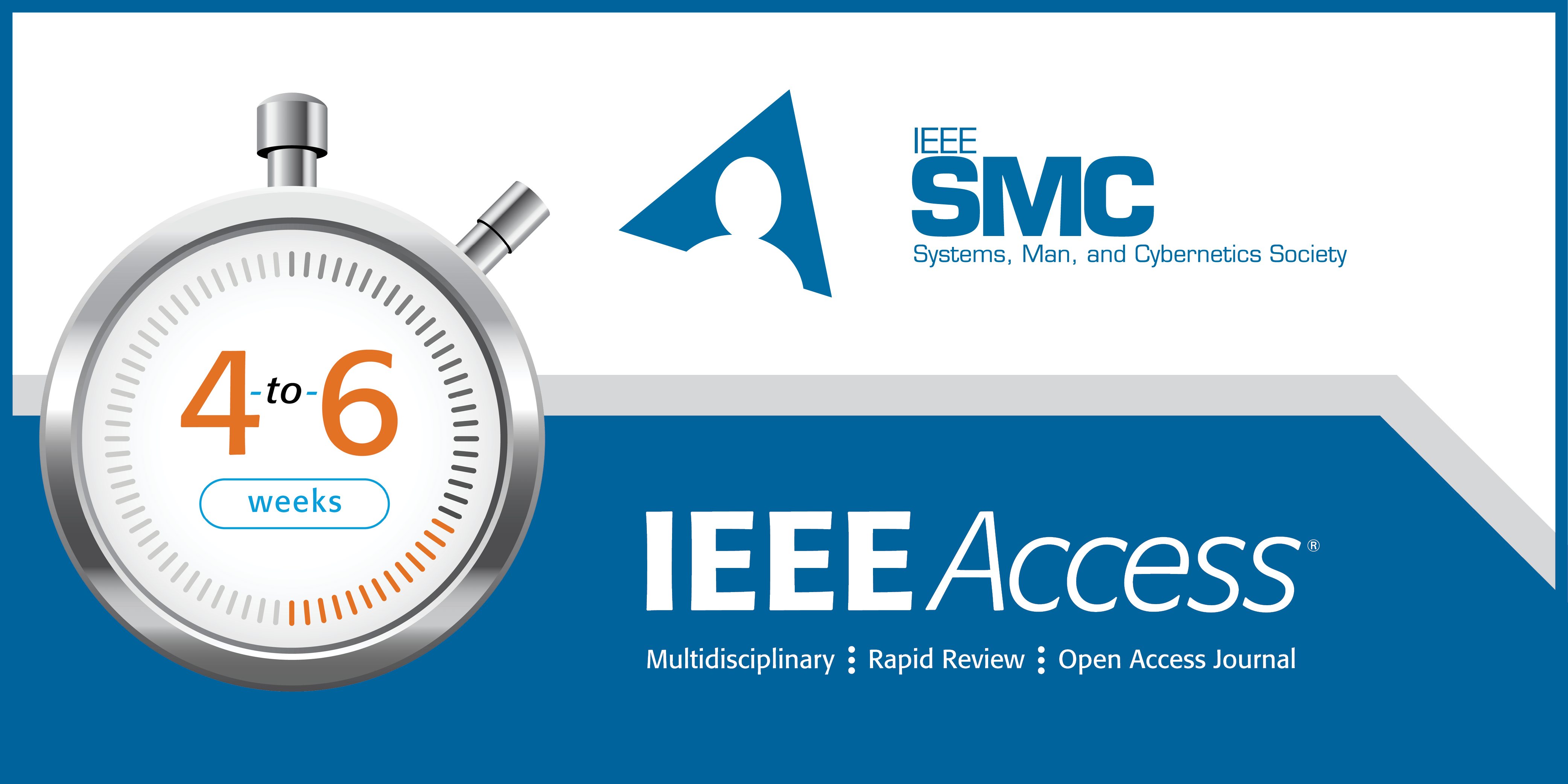
-
Aim & Scope
Publish articles of significant theoretical findings and application case studies in areas of systems science and engineering, human-machine systems, cybernetics, and computational social systems.
-
About the IEEE Systems, Man, and Cybernetics Society Section in IEEE Access
In response to IEEE’s continued commitment to providing options to support the needs of all authors, IEEE is introducing an IEEE Systems, Man, and Cybernetics Society Section within IEEE Access ⧉.
We invite you to submit your open-access articles for peer-review and publication in this new open-access section. This is an exciting opportunity for your research to benefit from the high visibility and interest the journal’s marketing launch will generate. Your work will also be exposed to 5 million unique monthly users of the IEEE Xplore®⧉ Digital Library.
The IEEE Systems, Man, and Cybernetics Society Section within IEEE Access will draw on the expert technical community to continue IEEE’s commitment to publishing the most highly-cited content. This section is fully open and compliant with funder mandates, including Plan S⧉.
The IEEE Systems, Man, and Cybernetics Society invites you to submit papers presenting ground-breaking research in systems science and engineering, human-machine systems, cybernetics, and computational social systems.
-
Papers Format
There is no page limit for articles. Submission checklist available here.
-
Open Access
This journal is 100% open access, which means that all content is freely available without charge to users or their institutions. All articles are published under a CC-BY 4.0 license⧉, and the author retains copyright. Users are allowed to read, download, copy, distribute, print, search, or link to the full texts of the articles, or use them for any other lawful purpose, as long as proper attribution is given.
Open access is provided through the payment of an article-processing charge (APC) paid after acceptance. APCs are often financed by an author’s institution or the funder supporting their research.
The articles in this journal are peer-reviewed in accordance with the requirements set forth in the IEEE Publication Services and Products Board Operations Manual. Each published article was reviewed by a minimum of two independent reviewers using a single-blind peer-review process, where the identities of the reviewers are not known to the authors, but the reviewers know the identities of the authors. Articles will be screened for plagiarism before acceptance.
Corresponding authors from low-income countries are eligible for waived or reduced APCs⧉.
-
Ethics
All IEEE authors are expected to adhere to IEEE’s publishing ethics, including the definition of authorship⧉, the appropriate citation of sources⧉, the accurate reporting of data⧉, and the publishing of original research⧉. Visit the IEEE Author Center⧉ to learn more. All articles submitted for publication should be original and not under consideration elsewhere; if your article is based on a previous publication such as a conference proceeding, cite the original publication and clearly indicate how the articles differ. Contact the Editor-in-Chief with any questions on publishing ethics.
-
Article Submission
View the Instructions for Authors here.
- All articles must be submitted via the Access submission site at https://mc.manuscriptcentral.com/ieee-access⧉, by indicating the Society Section: IEEE Systems, Man, and Cybernetics Society Selection when completing the manuscript type question
- Format your article for submission by using the article template⧉, located in the IEEE Author Center. [Word and LaTeX versions are available.]
- Submit your article text in PDF format. Visit the IEEE Author Center⧉ for information on writing the abstract, using equations in your article, publishing author names in native languages, and more.
- Submit your figures individually in PS, EPS, PDF, PNG, or TIF format. Visit the IEEE Author Center⧉ for information on resolution, size requirements, file naming conventions, and more.
- For information on submitting supplementary material such as graphical abstracts, multimedia, or datasets, visit the IEEE Author Center⧉.
-
ORCID
All IEEE journals require an Open Researcher and Contributor ID (ORCID) for all authors. ORCID is a persistent unique identifier for researchers and functions similarly to an article’s Digital Object Identifier (DOI). You will need a registered ORCID to submit an article or review a proof in this journal. Learn more about ORCID⧉ and sign up for an ORCID⧉ today.
-
English Language Editing Services
English language editing services can help refine the language of your article and reduce the risk of rejection without review. IEEE authors are eligible for discounts at several language editing services; visit the IEEE Author Center⧉ to learn more. Please note these services are fee-based and do not guarantee acceptance.
-
Share Your Code and Data
Increase the impact of your work by sharing your code and data for others to view, build upon, and reuse. IEEE works with Code Ocean, a cloud-based computational reproducibility platform, to make your code discoverable. IEEE DataPort, an online data repository of datasets and data analysis tools, makes your datasets discoverable. Visit the IEEE Author Center⧉ for more information.
-
Editorial Board
Choon Ki Ahn, Korea University, Korea
Xiaojie Su, Chongqing University, China
Laura Celentano, University of Naples Federico II, Italy
Huiyan Zhang, Chongqing Technology and Business University, China


